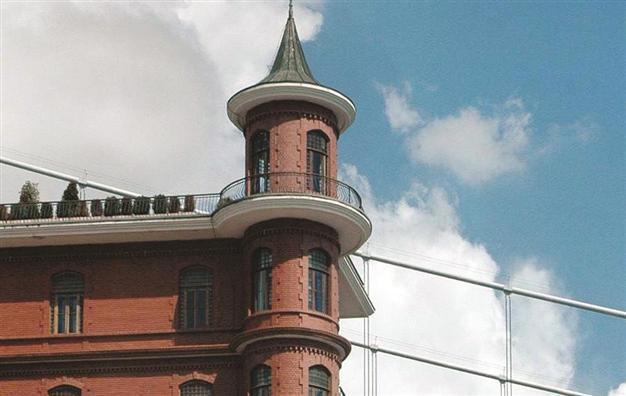Technology a ‘work of art’ at the ‘Haunted Mansion’
ISTANBUL

As an electronic artist, Lozano-Hemmer develops interactive installations that are at the intersection of architecture and performance art. His main interest is in creating platforms for public participation.
Borusan Contemporary presents two exhibitions at its museum office “Perili Köşk” (Haunted Mansion), parallel to the 13th Istanbul Biennial. Rafael Lozano-Hemmer’s solo show, entitled “Vicious Circular Breathing and Segment #4,” a selection from the Borusan Contemporary Art Collection, is currently on display.Internationally acclaimed artist Lozano-Hemmer’s exhibition aims to explore the very personal, emotionally evocative nature of his work that has been produced with technologies both high and low including biometric sensors, projection, custom software, and motorized mechanics, not to mention air, paper bags and people. His work “Vicious Circular Breathing,” from which the exhibition takes its name, is a special new work commissioned by the Borusan Contemporary Art Collection that is being presented for the first time as part of this solo exhibition.
Several of Lozano-Hemmer’s installations include the use of particular words and sentences to add additional meaning to the installation. These texts are used to elaborate on a deeper meaning that involves the viewer and their actions in order to affect the atmosphere and perception. Some of the text based installations, such as “Third Person” and “Subtitled Public,” place words upon the subject itself. The random nature of the texts leaves the viewer with a sense of helplessness, as they have no control over what they are labeled as, so they experience the pleasant and not-so-pleasant connotations that are associated with the words placed upon them. The text based installations such as “33 Questions Per Minute” and “There is No Business Like No Business” are reliant upon the viewer’s will to participate.
One of the things separating Lozano-Hemmer from most artists is his comprehensive use of technology. Most of his works contain more than one element of technology to create the lasting effect that has made his work so famous. Some of the technology he uses includes: robotics, custom software, projections, internet links, cell phones, sensors, LEDs, cameras, and tracking systems.
Lozano-Hemmer recognizes that western culture is technology-based, emphasizing that “even if you are not using a computer you are affected by this environment. Working with technology is inevitable.”
Ever since the industrial revolution, technology has been used to more efficiently communicate and create art. Lozano-Hemmer has simply taken it upon himself to extend the use of audio visual media in order to incorporate surveillance of his viewers into his work consequently, creating grand displays that are etched in the memories of many – even though the installations are only temporary.
As an electronic artist, Lozano-Hemmer develops interactive installations that are at the intersection of architecture and performance art. His main interest is in creating platforms for public participation, particularly by using technologies such as robotics, computerized surveillance or telematic networks non-traditionally. Inspired by phantasmagoria, carnival and animatronics, his light and shadow works are “anti-monuments for alien agency”.
His large-scale interactive installations have been commissioned for events such as the Millennium Celebrations in Mexico City (1999), the Cultural Capital of Europe in Rotterdam (2001), the UN World Summit of Cities in Lyon (2003), the opening of the YCAM Center in Japan (2003), the Expansion of the European Union in Dublin (2004), the memorial for the Tlatelolco Student Massacre in Mexico City (2008), the 50th Anniversary of the Guggenheim Museum in New York (2009) and the Winter Olympics in Vancouver (2010).
Segment #4
Alongside Lozano-Hemmer’s solo show, “Segment #4” consists of a diverse selection of works from the Borusan Contemporary Art Collection, uniquely open to the public for viewing in the office spaces of Perili Köşk. It includes works by artists such as Ali Kazma, Erwin Redl and Paul Schwer.
Another site-specific installation that looks set to draw particular attention is “Meandering” by Austrian artist Erwin Redl. This work consists of LED light panels that surround the stairwells of the building.
Another new large scale public installation that will become part of the collection, also being shown at the same time, is a light and video work entitled “Our Dreams Remain Our Dreams,” created by the French artist Thierry Dreyfus. For this commissioned work, Dreyfus has the intention of “turning the building away from its first likeness, then revealing its dreams and offering its intimate personality.” The artist shot and edited a video that will appear under the balconies of the Perili Köşk façade.
Parallel to the biennial site, carefully-chosen installations will continue to bring dynamic contemporary art to Istanbul until Feb. 16. The exhibitions at the biennial sit are open until Oct. 20.
















